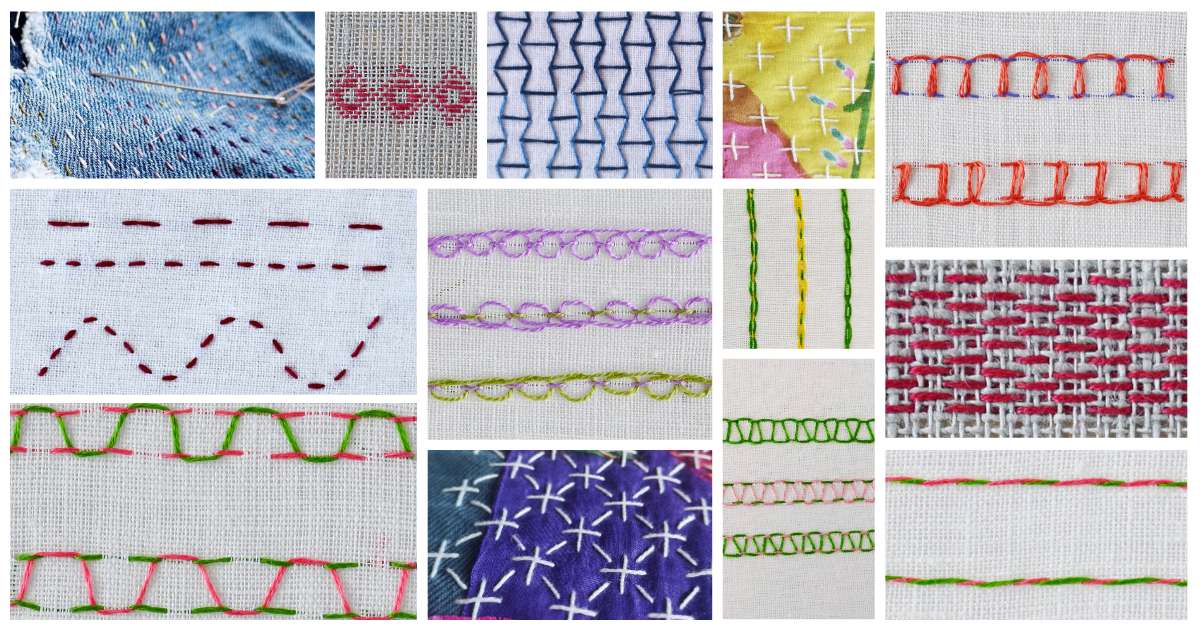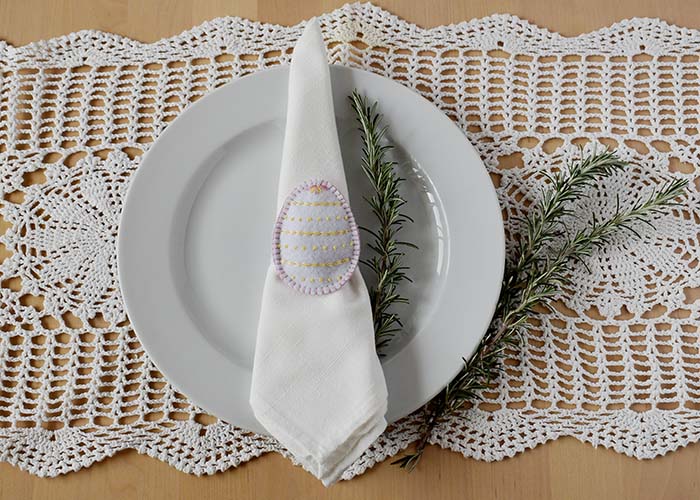Running stitch and its variations
Hand embroidery stitches from the Running Stitch family
Every sewist or embroiderer knows the Running stitch. It’s one of the first stitches we learn, right? Also, it’s one of the stitches that we use a lot.
In hand embroidery, Running stitch has a lot of applications:
- Outlines,
- Borders,
- Lettering,
- As a base for more complex composite stitches.
But that’s not all. Running stitch is excellent for mending clothes or basting. Besides that, this stitch is indispensable in hand quilting.
Variations of the Running stitch
Even though Running Stitch has so many applications, it also has a lot of variations. I listed the best-known and most widely used variations of the running stitch below. If you want to learn more about each stitch, you will find a page with the video tutorial linked to the name of each stitch.
Running stitch
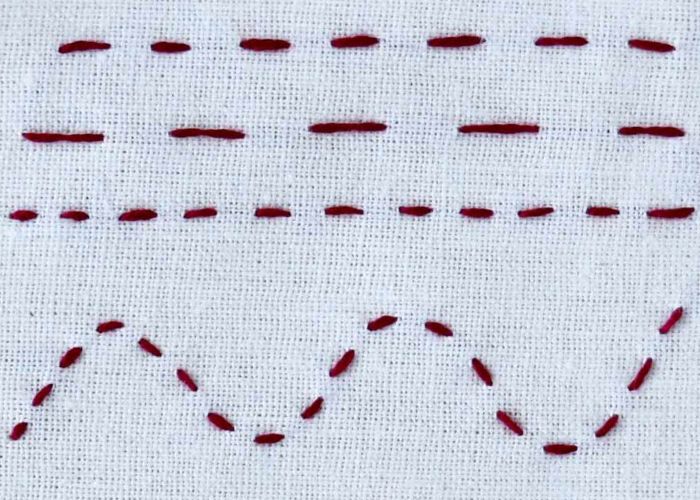
The running stitch is the basic stitch of hand embroidery, on which all other forms of sewing are based. We make Running stitch by passing the needle in and out of the fabric. The needle is continuously pushed through the cloth, starting on one side and ending on the other. We can use both sewing and stabbing methods to embroider this stitch.
Threaded running stitch
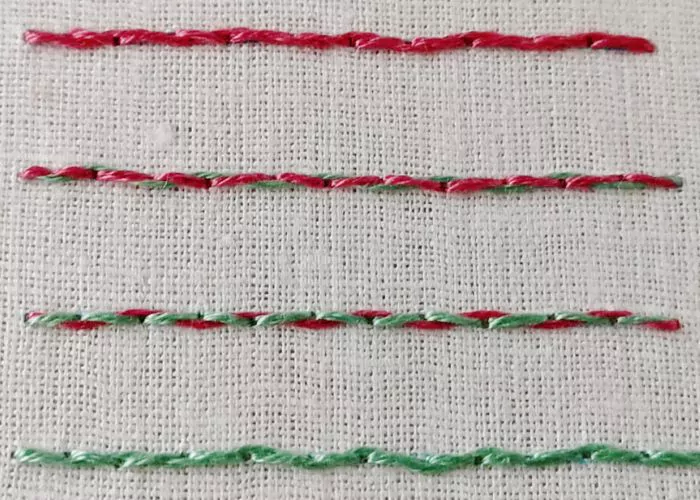
A threaded running stitch is a hand embroidery stitch made by combining running stitch and threading. After embroidering the running stitch, lace the second thread through the running stitches without entering the fabric or crossing the running stitch.
You can embroider the threaded running stitch in a single color to create a wavy line. Or, you can choose two contrasting colors to create exciting patterns.
Double-threaded running stitch
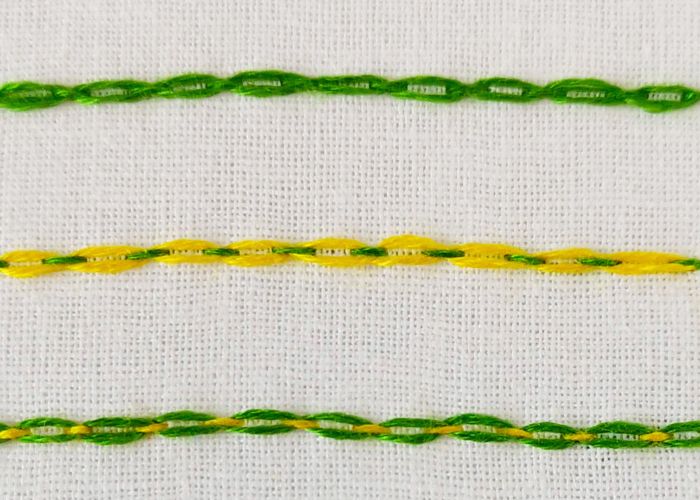
One more variation of threaded running stitch. But this time, it is more decorative and voluminous.
After embroidering the running stitch, lace the second thread through the running stitches without entering the fabric or crossing the running stitch. This lacing is made two times to form a chain-like pattern.
You can embroider the threaded running stitch in a single color and create a single-color chain or choose two contrasting colors to create exciting patterns.
Whipped running stitch
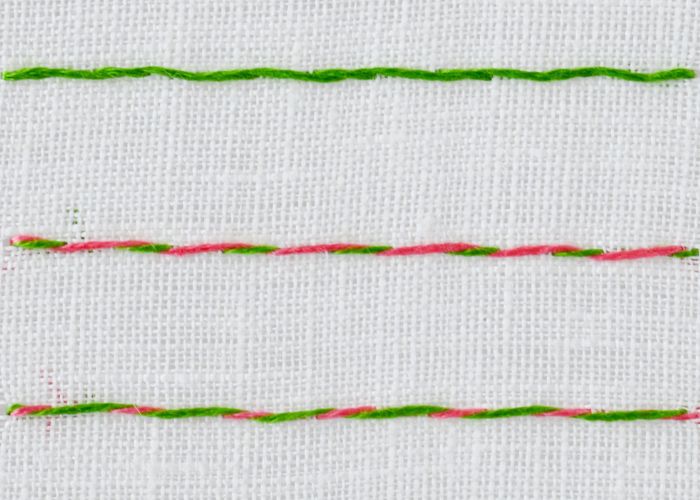
A whipped running stitch is a hand embroidery stitch made in two steps. First, we embroider a simple running stitch. Then, we whip it with another thread. For example, you can use the same color thread to make a straight raised line or two contrasting colors to create a rope-like line.
Looped running stitch
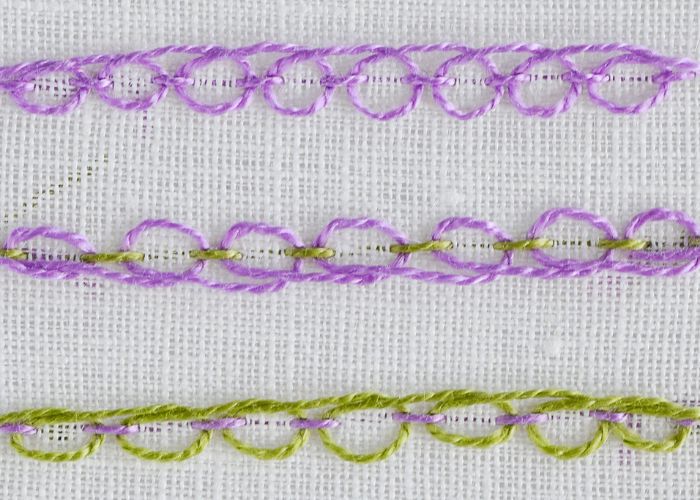
A looped running stitch is one more hand embroidery stitch where the running stitch is a base of the stitch. First, we embroider a simple running stitch and then add looped lacing it with another thread. You can use the same color thread to make a single-color ornament or two different colors to create intriguing patterns.
Stepped running stitch
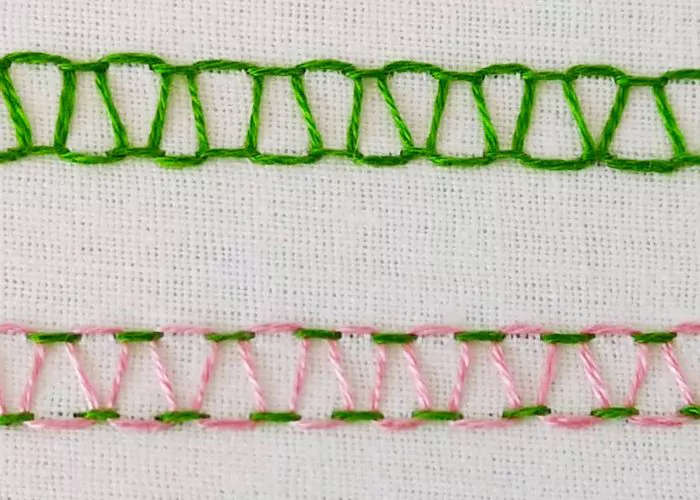
A stepped running stitch is a hand embroidery stitch that combines the foundation stitch (running stitch) and threading.
After embroidering two parallel lines of the running stitch, lace the thread through the running stitches without entering the fabric or crossing the running stitch. This threading, made in precise order, creates a decorative stitch perfect for decorative borders.
Stepped running stitch has some variations. If you are curious – search for Gut raincoat stitch or Clown collar stitch.
Meandering stitch (parallel running stitch)
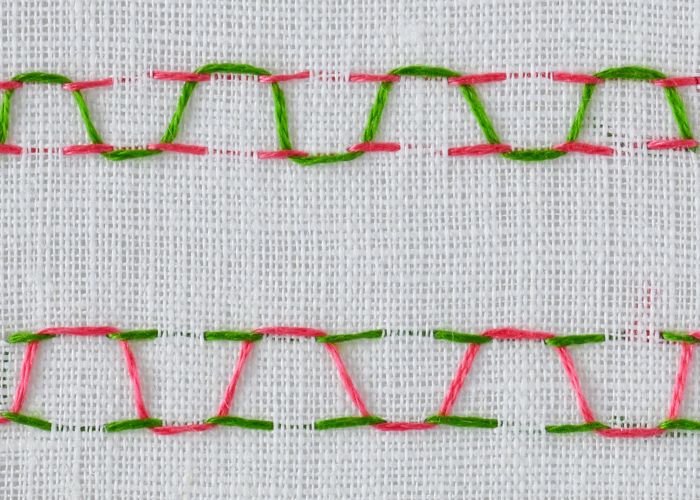
Meandering stitch is one of the variations of the Parallel running stitch. First, we embroider two parallel rows of a simple running stitch to make a meandering stitch. The placement of the stitches is important – place them one under the other. The second step is lacing. Lace a thread through the two rows of running stitches to form a decorative motive. You can use the same color both for running stitches and for lacing.
Fairy lights stitch (parallel running stitch)
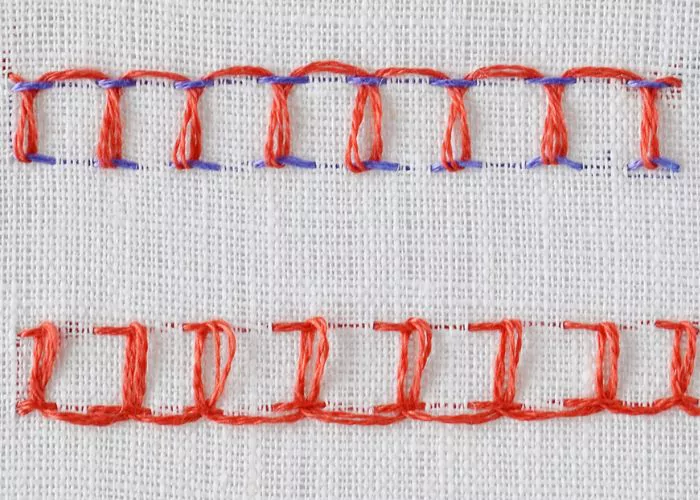
Another variation of Parallel running stitch has a romantic name of Fairy Lights stitch. It is a hand embroidery stitch made in two steps. First, embroider two parallel rows of a simple running stitch. The placing of the stitches in two rows – one under the other. The second step is lacing other threads through the parallel running stitches to form a decorative motive.
Eskimo lace ending
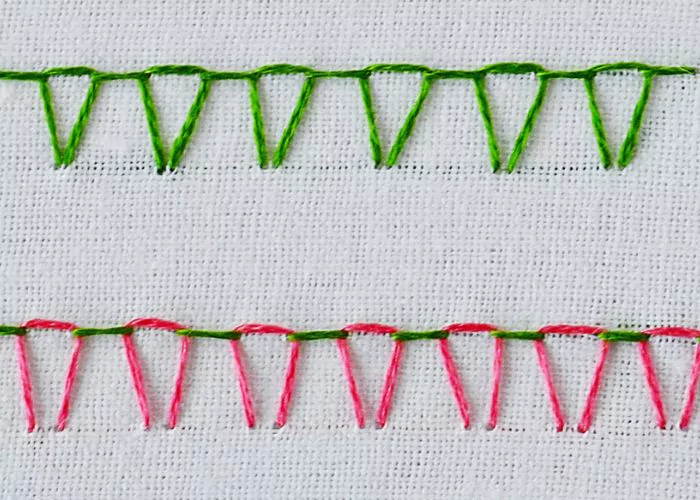
Eskimo lace ending, a.k.a. Eskimo stitch or Laced edging stitch, is one more decorative stitch from the Running stitch family.
This hand embroidery stitch combines the running stitch and lacing. You can use this basic stitch for borders or decorative outlines.
Japanese darning stitch
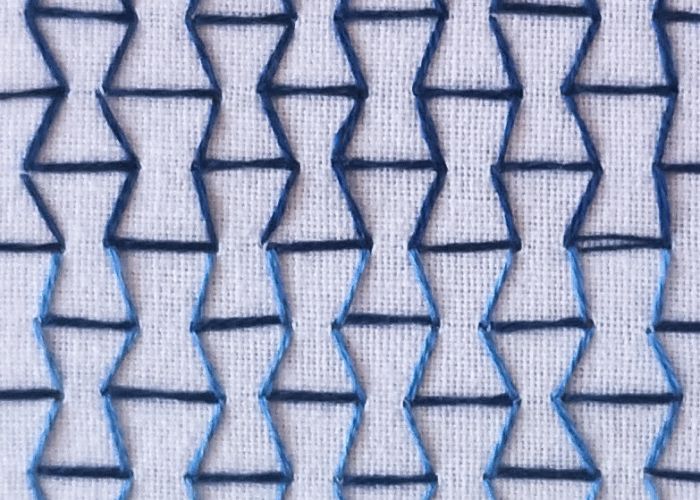
Japanese darning stitch is a variation of a running stitch for filling. In this stitch, two parallel lines of running stitches are connected with diagonal stitches. Traditionally it is used for darning in sashiko and boro embroidery. In modern embroidery, a Japanese darning stitch can fill extensive areas and create a beautiful geometrical pattern.
Holbein stitch
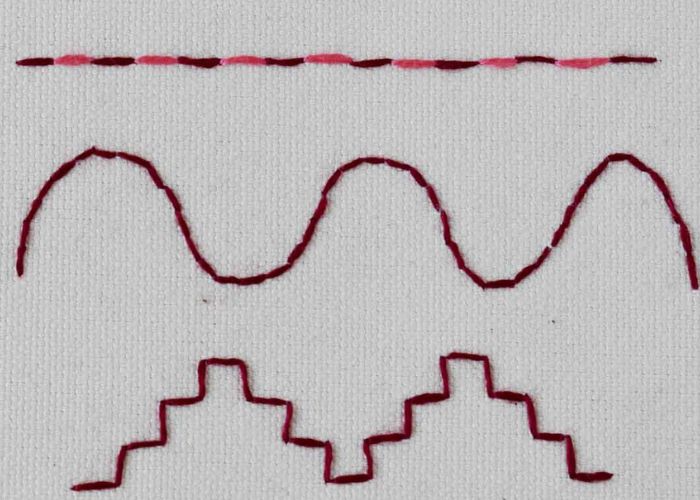
Holbein stitch is another variation of a running stitch. Visually it resembles a backstitch. But, unlike the back stitch, it appears the same on both sides of the fabric.
The method of embroidering a Holbein stitch is simple. First, embroider the line of the running stitch. Then, add one more line of the running stitch above, closing the gaps of the stitches from the first row.
Darning stitch
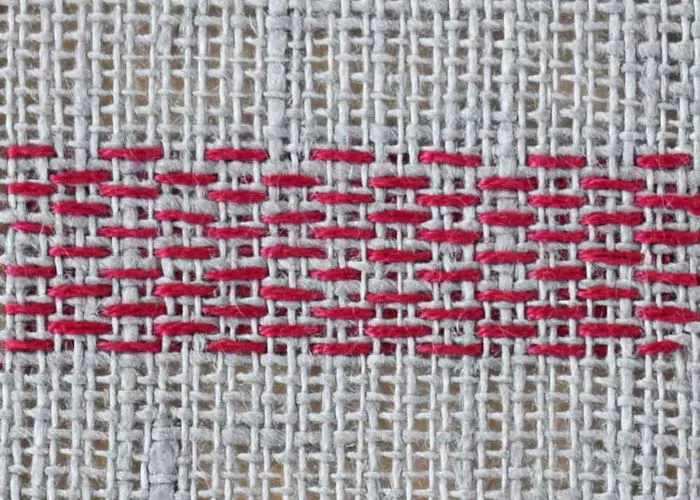
Darning stitch is one of the variations of the Running stitch used for filling. This stitch is created by alternating parallel rows of the running stitch to create a pattern with both negative and positive elements.
A darning stitch is also called Darned embroidery or a Tacking stitch. If the decorative design is created by alternating the positive and negative space of the stitches, it can be called the Kogin stitch.
Kogin stitch
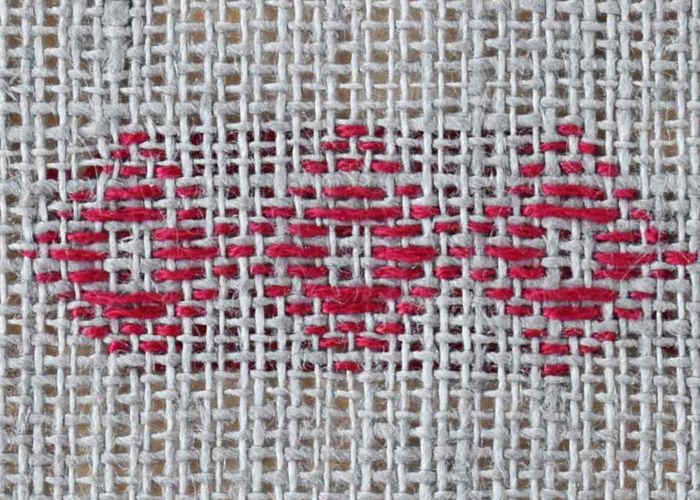
Kogin stitch (Kogin Zashi Technique) is a form of Darning stitch from Japan. It is one of the sashiko forms.
Kogin stitch has very antique history. The farmers of the Tsugaru district in the northern part of Honshu Island, Japan used this stitch for mending. Kogin stitch is often called sashiko or darning stitch.
In conclusion
As you can see, we can choose from many beautiful variations of a running stitch for hand embroidery, quilting, sewing, or mending. From a simple line to decorative borders and even filling areas!
What’s next?
Looking for some other hand embroidery stitch? Head to this blog’s Stitches and Techniques part and choose the stitch you want to learn!

